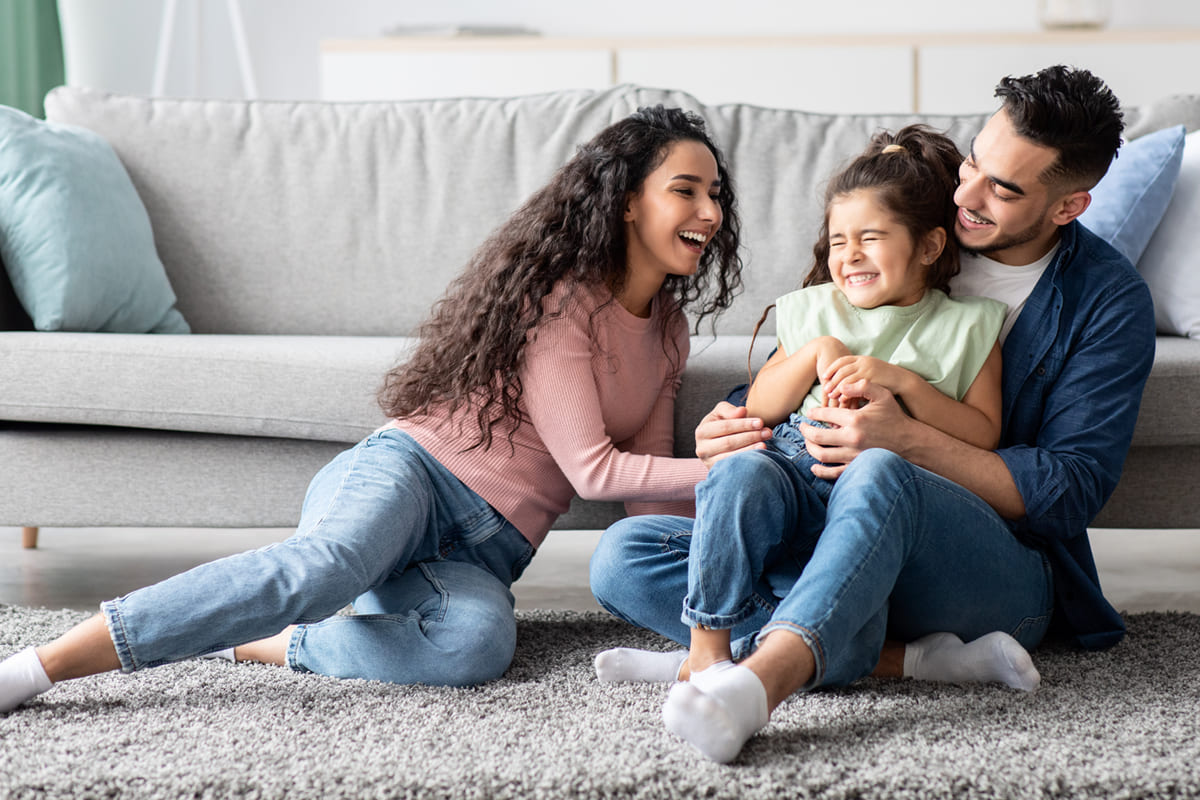Check In With Your Children
LAU Child and Adolescent Clinical Psychologist Pia Tohme answers parents’ questions on handling their children’s concerns in uncertain times.
In light of distressing events, LAU clinical psychologists took the initiative to organize four sessions in October that addressed timely common concerns that faculty staff and students across the LAU community are facing, and dedicated two in-person sessions for LAU students to learn directly from the experts.
Across the sessions, the clinical psychologists underscored that there is no “right” or “wrong” when facing emotional stress amid uncertainty. Typically, people initially react with a “fight, flight or freeze” response, which is not unhealthy initially but which could lead to burnout if left unchecked.
In this interview, LAU Child and Adolescent Clinical Psychologist and Assistant Professor Pia Tohme guides parents through establishing open communication with their children and supporting them as they try to understand the world around them, especially in turbulent times.
Children tend to ask plenty of questions as they navigate new and complex settings and try to make sense of incomprehensible situations, especially when they are exposed to more online information platforms and content.
Dr. Tohme offers valuable advice on the type and amount of information parents should share with their children, as well as practical tools and strategies to help them provide moral support to their families.
How much should we tell our children about what is happening in the world around them?
This depends on the child’s age. For younger children, it is best to follow their pace and enquire about what they already know without volunteering the information. Parents can reframe, explain, clarify or correct what the child has heard or read while providing basic, honest information only. For older children and adolescents, it is best to encourage communication. It is an opportunity to discuss what’s happening on two levels: historically and intellectually, as well as practically in terms of managing the emotions bred by uncertainty.
What are examples of responses that can address their concerns?
In the case of younger children, discuss what is affecting them directly in practical terms, without going into the details of what is happening in the wider context. For example, you might say that they will be celebrating their birthday differently this year. You can explain that there will be a small birthday party, but that you would also like other children who cannot have their birthday to feel happy too, and encourage your child to share one of their gifts with someone in need.
For older children, it is good to inform them about what is going on. You could say “Lebanon is not on good terms with its neighboring country, and we are having fights over what is theirs and what is ours, just like when you and your friend disagree.” But you should follow this up with reassurance: “We are safe though, and if anything changes, we will let you know. As your parents we are doing everything we can to keep you safe. If you hear anything from your friends or have any questions about this let us know and we’ll talk about it.”
With adolescents, it is important to share the details based on what they already know. Adolescents are likely to have been exposed to the news on social media and it is our role as parents to make sure they have the facts and to help debunk any inaccurate information they might have.
How should we respond to common questions, such as: “Are we going to leave Lebanon?”, “Are we going to leave our friends?”
Always be honest with your children. If you do not have the answer, simply tell them that you don’t but that you will let them know if anything changes. You can also ask them where their fear or worry is coming from – perhaps one or more of their friends has already left or is talking about leaving, in which case, you should validate their emotions.
Should we hide our fears of uncertainty from our children and pretend that we are fine?
It is okay for your children to see you are scared, sad, or worried. Remember that you are their role model. If they are aware of what is going on and see you acting as if everything is fine, they might think that they are not allowed to be worried and hide their real emotions. Your role here is to show your feelings and guide your kids through the steps that you, yourself, are taking to work through the worry and stress surrounding uncertainty. This way you can make sure that they can use these strategies to work through their own emotions, knowing they can always come back to you to discuss them.
What are some practical tools for parents to use during this period?
Look out for signs of worry and distress in your children, especially for changes in their behavior, as it might be their way of expressing their feelings.
Be attentive to games they are refusing to play or subjects they are refusing to talk about; it could be a sign of something they are worried about.
Start the conversation but follow the child’s pace and keep it that way. Don’t push them to talk, use age-appropriate terms and create a structured time for them to ask questions.
Listen and provide empathy and support, by being honest, validating their emotions, and reassuring them that it is your role to keep them safe, but refrain from making any unrealistic promises. Play and/or connect with your child as much as possible.
Listen to their version of the facts. Depending on their age, they might have different worries, or they might have heard different stories from their friends or social media.
Involve them in the process of creating a safe place. Do not underestimate how much they know or make sense of things – they can perceive your worry and copy your coping mechanisms.
